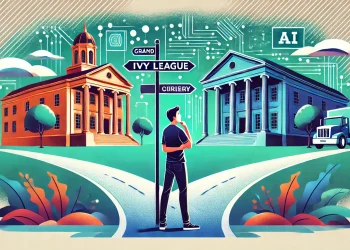No products in the cart.
Navigating Immigration Changes for International Students in 2025
International students face new challenges in the U.S. due to immigration policy changes in 2025. This article explores the implications and strategies for success.
New York, USA — As the landscape of U.S. immigration policy shifts, international students are bracing for significant changes. The recent announcements from the Biden administration indicate a tightening of visa regulations and increased scrutiny on student applications. These adjustments are poised to impact thousands of students from countries like India, who seek education and opportunities in the United States.
The U.S. has long been a favored destination for international students, with over 1 million enrolled in higher education institutions as of 2023. However, the current political climate is prompting universities and students alike to reassess their strategies. The changes are largely a response to concerns over national security and economic stability, with the administration emphasizing the need for a more rigorous vetting process.

According to the Institute of International Education, India remains the second-largest source of international students in the U.S., with approximately 200,000 students enrolled in 2023. However, recent policy shifts may deter prospective students. The new regulations, which include stricter requirements for financial documentation and academic credentials, could lead to a decline in applications from Indian students, who often rely on scholarships and loans to finance their education.
In addition to financial hurdles, the political rhetoric surrounding immigration has created an atmosphere of uncertainty. Many students express concerns about their ability to secure internships and job placements post-graduation, particularly in light of the Optional Practical Training (OPT) program, which allows international students to work in the U.S. for up to three years after completing their degree. The recent changes have led to fears that OPT might be curtailed, limiting opportunities for international graduates.
According to the Institute of International Education, India remains the second-largest source of international students in the U.S., with approximately 200,000 students enrolled in 2023.
Universities are responding proactively. Institutions such as the University of Southern California and Purdue University are enhancing their support services for international students. They are offering workshops on navigating the visa process, understanding new regulations, and preparing for job searches in a competitive market. These initiatives aim to equip students with the knowledge and skills necessary to thrive despite the changing landscape.
Moreover, the role of technology in education is becoming increasingly significant. Online degree programs and hybrid learning models have gained traction, allowing international students to pursue their studies remotely if they face obstacles in obtaining a visa. This flexibility could mitigate some of the impacts of stringent immigration policies, providing students with alternative pathways to achieve their educational goals.
As the situation evolves, it is crucial for international students to stay informed and adaptable. Networking with alumni and industry professionals can provide insights into navigating the job market and understanding the implications of policy changes. Additionally, students should consider diversifying their options by exploring institutions in other countries, such as Canada and Australia, which have been actively courting international talent.
In the face of these challenges, resilience and resourcefulness will be key traits for international students in 2025. By leveraging support systems, embracing technology, and remaining adaptable, students can position themselves for success in an uncertain environment. The ability to pivot and explore new opportunities may not only enhance their educational experience but also prepare them for a dynamic global workforce.
Online degree programs and hybrid learning models have gained traction, allowing international students to pursue their studies remotely if they face obstacles in obtaining a visa.
Ultimately, the landscape for international students in the U.S. is shifting, but it is not insurmountable. With the right strategies and support, students can navigate these changes and continue to pursue their academic and professional aspirations. The future may be uncertain, but the potential for growth and opportunity remains bright for those willing to adapt.











